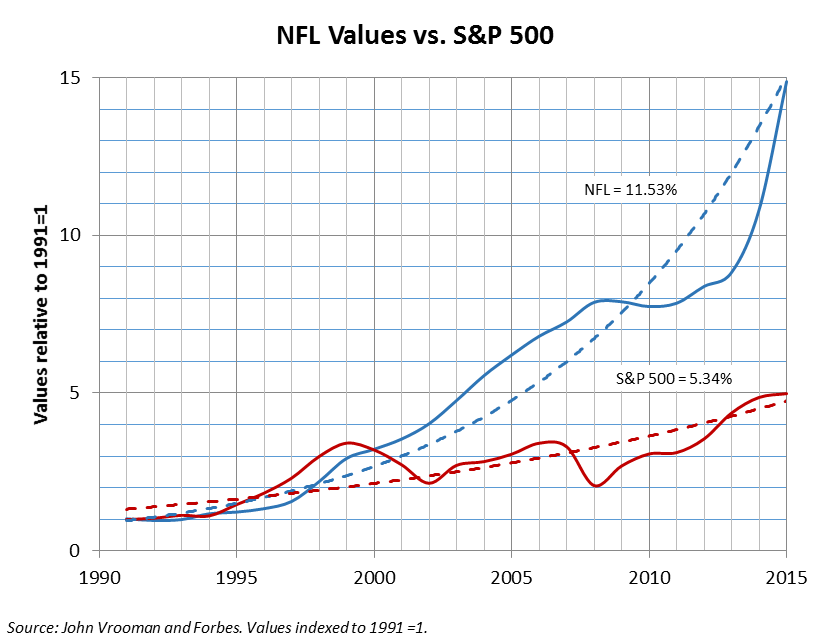Rival Leagues Rising
Posted by John Vrooman on Thursday, January 31, 2019 in National Football League.
Interview with TSN (The Sports Network)
. What factors have led to the the creation/planning of at least three alternative professional football leagues — AAF, XFL, FFL?
The NFL is a stone cold monopoly league (one seller) in the fans product market (gate and media) and monopsony (one buyer) cartel in the players’ labor market. The NFL exploits college FB for almost all player development expenses and the NCAA has in essence become a quasi-professional minor league player development system for the NFL (and NBA). (MLB and NHL have their own player development minor leagues that strategically block potential rival leagues).
As a result of its unchecked monopoly power in all markets, the NFL charges fans and media networks twice as much for half as much football as they want, while it pays half as many players half of what they would be worth in a competitive market.
The League artificially constrains its membership to leverage maximum franchise values and expedite the extortion of public stadium subsidies for private business. Since the imposition of the hard salary cap in 1993, the value of an average NFL club has increased at about 12 percent, more than twice the best competitive market rate available in the S&P 500 Index.
The accompanying graph compares the competitive rate of return of the S&P 500 and the monopoly rate of return for NFL cartel and the difference between the two rates of return is the perfect storm for the competition from prospective rival leagues.

. Why would investors believe there is a viable business model for alternative professional football played in the winter/spring, when so many others have failed in the past?
These leagues are forming as potential rival leagues but also can serve as player development leagues vertically integrated with the NFL (a viable minor league path parallel to NCAA Power 5). There is also a dead period in professional sports following the Super Bowl and preceding MLB season and NBA and NHL playoffs currently occupied only by NCAA Final 4 March Madness. The AAF and XFL are vertical extensions of CBS and NBC sport channels as they seek valuable live sports inventory for the off-seasons.
Investors are simply seeking a piece of the action derived from membership in a legalized monopoly cartel. In the process, rival league competition will temporarily drive the professional football market away from the monopoly profit maximum of the “no-fun” NFL toward the improved general welfare of fans and players.
. What evidence is there that a market exists for alternative professional football?
The exponential growth in revenues and franchise values in the NFL monopoly cartel and quasi-professional NCAA Power 5 football programs are prima facie proof of the League’s monopoly power and the existence of excess demand.
. Are there things these leagues are doing or are there circumstances that could make these leagues more successful than past ventures?
If the rival leagues are successful, then the NFL will preemptively adapt, adopt and ultimately merge (like the NFL v. AFL war-merger 1960-67) to regain its monopoly/monopsony power.
©2025 Vanderbilt University · John Vrooman
Site Development: University Web Communications